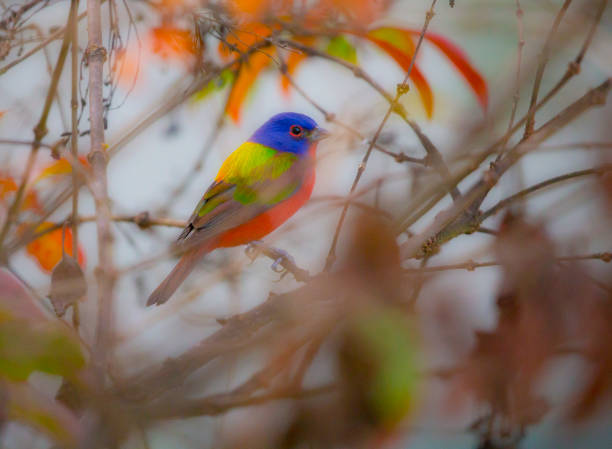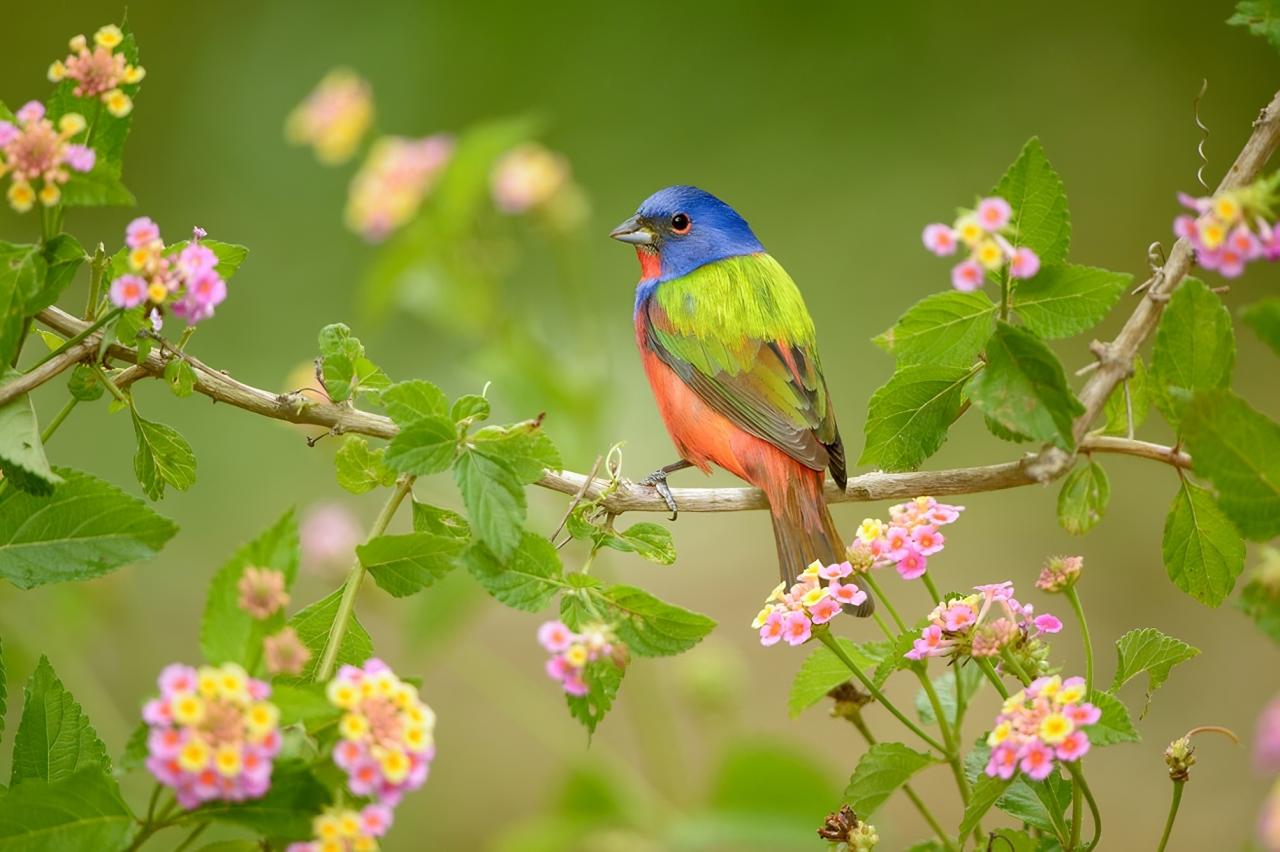
Within the vibrant landscapes of North America, a bird of incomparable beauty thrives, capturing the hearts of bird watchers and nature enthusiasts alike. Meet the Painted Bunting (Passerina ciris), a stunning member of the cardinal family, Cardinalidae. Adorned in a kaleidoscope of colors, the male painted bunting is a true spectacle, earning him the nickname “peerless” or “peerless.” This article explores the charming appearance, distribution, habits and reproductive behaviors of this magnificent avian gem.
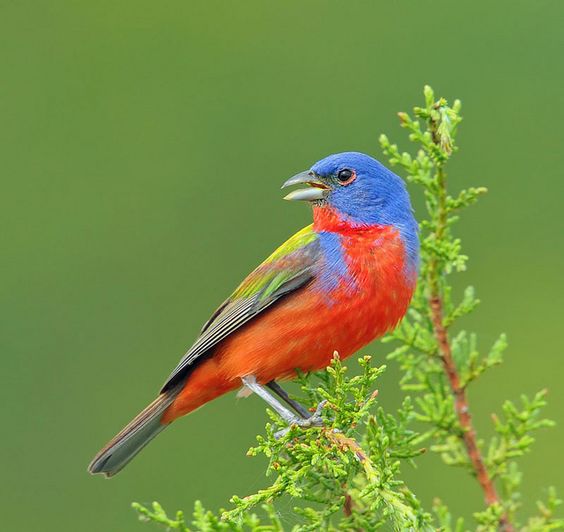
Appearance
The male painted bunting is an embodiment of nature’s art and displays a fascinating color palette. Its striking dark blue head, green back, and deep red rump and underparts make it easily identifiable. However, despite its captivating plumage, the male can be elusive, often hiding among foliage while singing its charming song. Upon close inspection, female and juvenile Painted Buntings reveal their own charm with their green and yellow-green plumage, which provides excellent camouflage. Adult females are distinguished by a brighter, more authentic shade of green, which distinguishes them from other similar songbirds. Juveniles undergo two molts in their first autumn, changing to plumage similar to that of adult females.
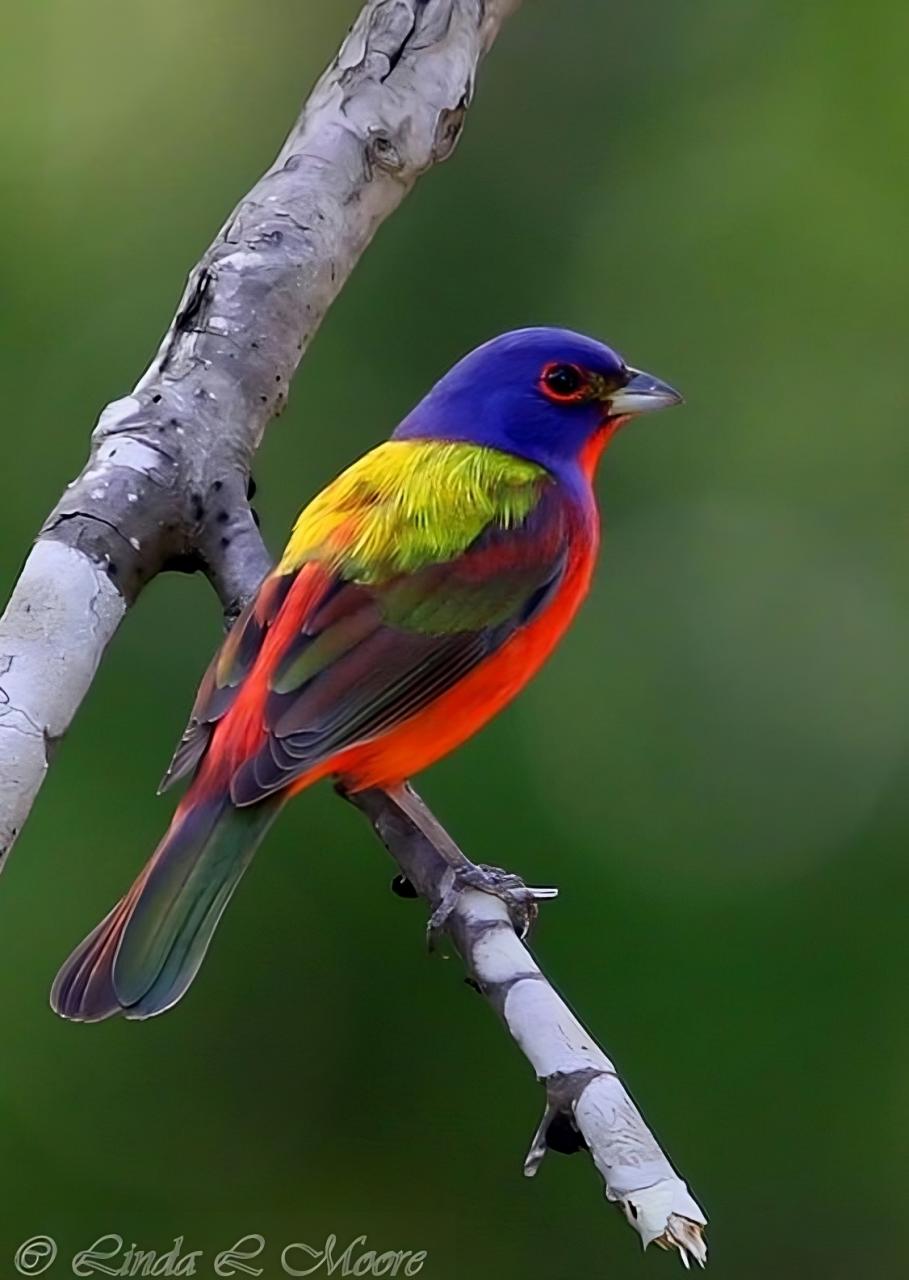
Distribution
Painted buntings inhabit several regions of North America, including the Caribbean islands and Central America. They are classified into an eastern and western population. The eastern population resides in the coastal areas of northern Florida to North Carolina, while the western population extends from Louisiana and Texas to Kansas. During winters, the western population migrates to Mexico and beyond, while eastern birds winter primarily in southern Florida, with occasional sightings in Cuba and the Bahamas. Their breeding habitats differ slightly: Western birds prefer partially open areas with scattered scrub and bushland, and Eastern birds opt for scrub communities and the edges of sea hammocks.
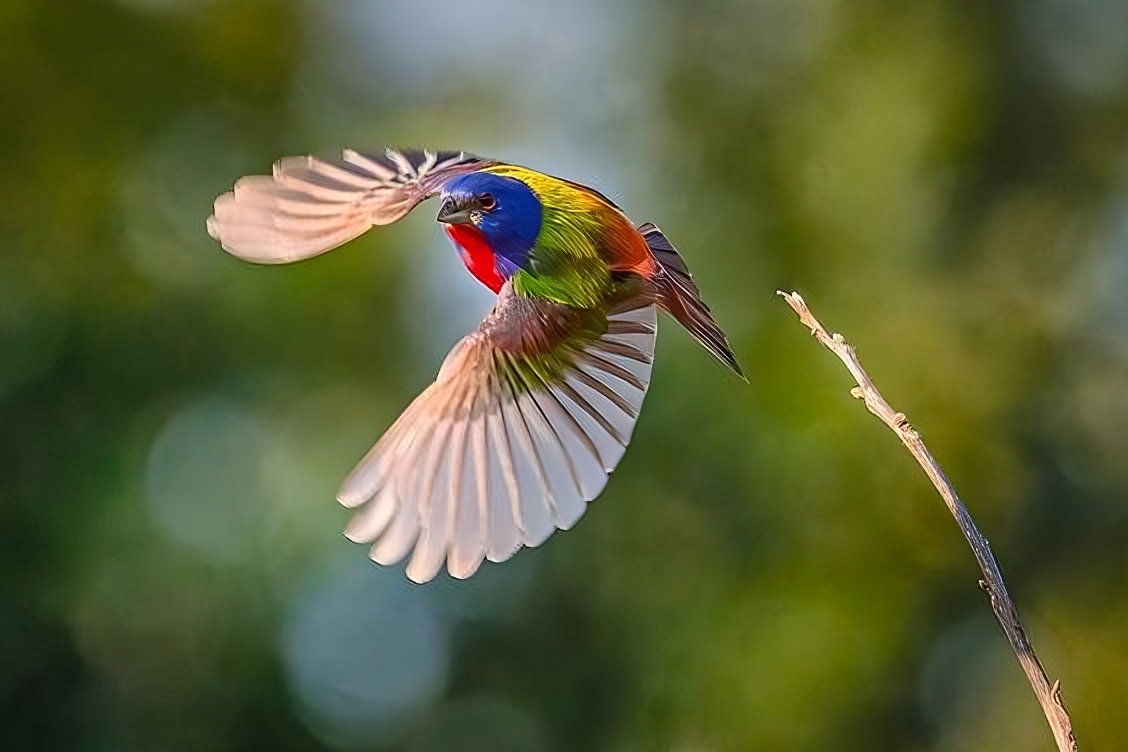
Habits and lifestyle
Painted buntings are social and diurnal birds, primarily active during the day. They move along the ground, jumping cautiously and stopping frequently to observe their surroundings. Shy and secretive, they can be difficult to observe with the naked eye, although they can become approachable when accustomed to bird feeders. Males are vocal performers and sing songs lasting up to 30 seconds to promote themselves or defend their territories during the breeding season. Visual displays, including butterfly-like flutters and a variety of postures, further complement their courtship rituals. The species performs a nocturnal migration, covering short to medium distances during autumn and spring.

Diet and Nutrition
The painted bunting’s diet varies depending on the season. During the winter, they are mainly herbivores and consume seeds and fruits. However, during the breeding season, they become carnivores and feed predominantly on insects such as caterpillars, beetle larvae, spiders, grasshoppers and snails.

Mating habits
Painted buntings exhibit monogamous mating behaviors, although some cases of polygyny, in which males take multiple partners, have been observed. During the breeding season, which runs from late March to early August, males establish territories and perform a variety of visual displays to attract females. Females build nests in low vegetation, carefully woven into the surrounding vegetation. Females raise two clutches each season and lay 3 to 4 eggs per clutch. Incubation, carried out only by the female, lasts approximately 11 to 12 days. After hatching, both parents are involved in caring for the altricial chicks, which fledge in 12 to 14 days and receive parental care for about 3 more weeks.

Population
The painted bunting faces threats to its population due to habitat loss in breeding and migration stopover areas. They are also susceptible to collisions with windows and parasitism by cowbirds. Unfortunately, the species is sometimes captured for the pet trade, especially in its wintering habitat. As a result of these factors, the number of painted buntings has declined since the mid-1960s.
